


 |
| "Bunnycakes" © 1999 Maria Pahls |
primitive pals #044
© Copyright 1997 Maria Pahls
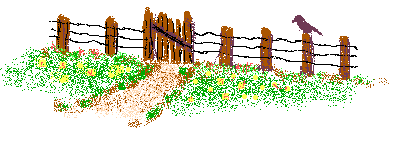
the fence post
(editor's letter)
"keeping secrets?"
dear friends:
have you noticed that primitive is catching on ~just a little? here and there a sprinkle of "primitive" will show up in "this" magazine or on "that" home decorating show...
geeze! let's not keep "primitive stuff" our little secret! the folks who put on the shows and put out the magazines want to know what will make you interested. they aren't mind readers ~ a five minute letter saying "hey! i want to see primitive stuff" would do the trick. if you like a book that has some primitive in it, write the publisher asking for more of the same.
here's hoping you tell someone else "the secret"!
primitively yours, maria pahls
ps it's no secret that there are many web sites and sources listed here for you to explore. if you should find that any of these are no longer in service or offer less than satisfactory service please contact us! we only want to list the best stuff!
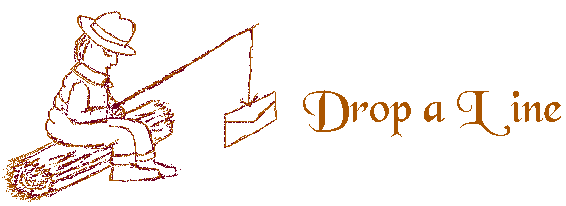
miscellaneous letters sent in by readers anita sent this note:
"i have recently become very interested in candle making. so i was very pleased to see the interview in issue 43 with nancy settel! i have childhood memories of my grandmother making candles in our basement. i was too young to help her but i enjoyed watching her. she decorated her candles by whipping the wax with an old fashioned hand beater. i sure wish i had her 'recipe' for making candles!!! i burn candles on a daily basis! they help me to feel relaxed and i think they add a warm and loving atmosphere to the home."
primitive ponderings
questions asked by readers, then replied upon in later issues.
new question
i was wondering if anyone can recommend a good book on candle making as well as a good source for wax used in making primitive type candles? ~anita
"what primitive means to me" #41
"Here is my idea of primitive: Primitive is a "rough around the edges" look. It seems to represent a more "free" look and attitude. Primitive is just simple...and doesn't require all the bows and frills that "country" needs to be cute. Primitive is honest and open. It is like the person that says "this is how i am...accept me for that or be on your way". Primitive says that to me. The ugliest doll in primitive is often the most beautiful. It is uninhibited and carefree. I think some people like primitive for that reason......it represents what they wish to be. How I think of primitive isn't easy to put into words. It means so many different things. I hope you got the general idea. Designing primitive is a special talent I believe. I hope to obtain that talent and nurture it. " laurie h.
"I too consider a primitive doll to be a doll similar to one a mother or older sister would have made 100 years ago or so for a young girl. The doll would be in duller colors and aged a bit, but doesn't necessarily have to be made in a crude fashion. However there are also other types of primitive dolls that are more folk art in nature, and there are primitive dolls that are whimsical in character. I find the differences interesting as well as different people's interpretations. Even though I'm rather new to the group, I can see the over all appreciation and recognition for the different types of primitive dolls being made. I'm still experimenting with different types of primitive dolls and haven't settled on any one style. I believe the spirit in which the doll was made and brought to life is just as important as the resulting doll." paula s.
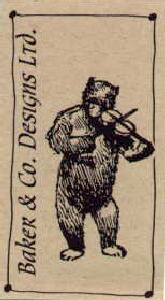
PRIMITIVE
ARTIST
INTERVIEW:
LORI BAKER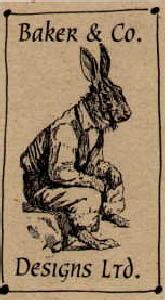
any one who has ever been to a show that lori baker is participating in knows the excitement that follows her. anxious shop owners and collectors line up before the doors open trying to map out the fastest route to her booth. once allowed to enter the crowd rushes past all the other exhibitors straight for lori's booth. they quickly snatch up each and every piece of her work and the booth is sold out within minutes!
here are a few things lori shared with us about her work:
pp: tell us about your creations.
lb:I design and make mohair artist bears and hares. once in awhile another animal. All are fully jointed ranging in size from 6" to 32" Some styles are more primitive than others, I like doing a distressed, old looking bear or hare but I have customers who like all styles. I have pieces in the Teddy Bear Museum in Japan, I'm working on a few other projects.....will let you know if they work out.
pp:where do you get your inspiration for the animals you create?
lb: Sometimes from old Teddy bears and hares. especially Steiff, Their range of animals and dolls is tremendous. They do wonderful rabbits. Inspiration can come from anywhere, it doesn't even have to be a bear...I love old Christmas, Easter, and Halloween decorations I have used bits and pieces of these for a spark. Even dolls. The eyes are always on the lookout!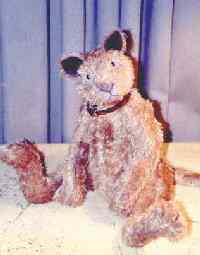
"KIT"
pp: would you consider the bears to be primitive, folk, vintage or other?
lb:I think my style changes depending on the piece. What works for one idea doesn't always work for another. I guess you could call my style Skitzo!
pp: have you always had this style or did it evolve from something else?
lb: I think a certain amount of style is just there but keeps evolving from year to year depending on influences.

"Midnight" pp: what got you started in this business?
lb: I've been making bears and hares for 10 years now(in my own designs) I entered the wholesale market 7 years ago. My mother sewed for other people from our home when I was young and taught me to sew. She, my sister, and I used to do some craft shows back in the 70's. I owned a restaurant and catering business, and when I first tried designingmy own pieces, sold my bears from there.
pp: how recently have you started designing patterns & kits? do you prefer doing finished pieces or kits/patterns?
lb: I actually had a pattern published in one of the teddy bear magazines about 8 or 9 years ago. Then for a while when I did alot of bear shows I had a kit for sale for just one 5" bear. It was always something I wanted to pursue further but never had the time.(not that I have any more time now!) My first love is the finished product I really love to sew and mohair is such a wonderful fabric. But the patterns are a fun sideline.
"Peter"
pp: being a pattern designer, how do you feel about others making and selling things you've designed?
lb: I've gone over this a question in my head a million times and come up with a million different answers! I guess if I'm going to put the pattern out into the market place I really need to accept whatever happens. I do have the thing on my patterns about "not for mass production" but I really don't know what good it does. Or does it matter. I would never turn things into pattern that I still make for my customers, I really try to make my patterns different than my other pieces. I guess I've always looked at this the same way I look at copying...It forces me to re-design, work harder come up with new things to stay one step ahead.. Without this force we could all become lazy! It really pushes me to go above and beyond. ( this still doesn't mean I like the idea of someone selling bunches of my designs but if I'm going to sell patterns someone is going to make them!)
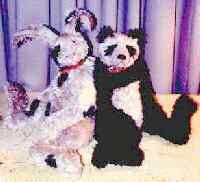
"Spot and Panda" pp:do you have a limited number of finished items that you sell or do you continue to make a pattern indefinitely?
lb:Some of my pieces are limited editions, but some are such good sellers that I just wait until they wear themselves out. I also get bored easily and want to design new things so that in itself limits the duration of some pieces.
pp:how long have you known that you wanted to do this? was there a particular pivotal moment that made you decide to "take the plunge" and start the business?
lb: I have always loved to sew. I also love being self-employed, but I remember at about age 7 or 8 sitting on "middle path" (a walkway from one end of our town to the other) with an orange crate turned upside down, selling things I made to passers by. I still can't believe my mother let me do it! (I lived in a very small town!) Ah, the beginnings of entrepreneurship! I do give great thanks to two people who influenced and helped me alot...Sherry Davis, taught me a lot about display, taste and hard work at shows... Through Sherry I met Sharon Andrews who was the person who convinced me to go to the Valley Forge wholesale show the first time. I don't think I would have been brave enough on my own! Thank you, to you both!
thanks lori! see resource section for info on lori's patterns .
tips & techniques
For "instant age" lightly spray a finished doll body with Glossy Wood Tone spray by Design Master. Make sure you use this product outdoors and spray it several feet away from the doll (spraying too close can ruin the doll) Repeat for a darker look. ~pat twitchin
primitive carrots for spring hares
wrap a piece of aluminum foil into a carrot shape. tear 1" strips of muslin and soak in fabric stiffener (or watered down tacky glue). wrap the muslin strips around the aluminum foil shape. while still wet paint them a muddy orange. once dry, rub with stain .for stems, attach small strips of green fabric. ~joanie
sawdust eggs
take a small plastic egg, used in those small nests you get at craft stores, cover surface with glue then roll in sawdust to give that primitive look. ~shari lutz
bleach tip
"when bleaching fabric to "age" remember that bleach reacts better to hot water. if the bleach is old, or has had the cap left off it may react differently with fabric than a fresher product. ~ shari lutz
aging bears
water stains: pour a small amount of hot water over a tea bag, allowing it to sit a few minutes in a saucer. place dripping teabag on a desired place to be stained. with a sponge squeeze out excess tea water allowing it to spread and stain. works great for paw pads and light colored bears.
darker stains: dip a cotton ball into a concentrated mixture of brown rit type dye with a bit of black added in. apply to desired area of bear.
antiquing and aging a new bear.......
on a new bear,dark stains can be achieved by dipping a cotton ball in weak dye water of dark brown with a few grains of black added. dark stains on the "backing" of mohair can be achieved by using the above method on the "inside" of the bear, before turning. walnuts make a wonderful dye for staining mohair.
to simulate wear:
Cut small holes in the pads, and then sand with fine sandpaper to thin the edges around the hole. Lightly sand the entire paw. To reproduce an aged bear, do not fill the body cavity entirely with stuffing. Leave space in shoulders to allow for tiltable positions. Reduce stuffing in arms and legs. Very lightly stuff ankles so that they may be "turned out". Trim away mohair in areas where natural wear would occur. Lightly and carefully apply a diluted bleach/water solution to the nose stitches. Leave out a few stitches when creating the nose to simulate wear."
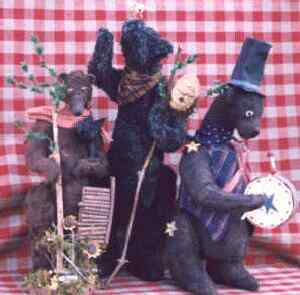
A sampling of bears by Gloria Bowlin
WHO'S IT? - WHAT'S IT?
miz izannah walker
izannah walker was a well-known american doll maker during the 1850's. regarded as the pioneer of the american cloth doll, she used oil paints on the head, and her trademark was sausage-type curls in front of each ear with more curls at the back. her dolls were typically dressed in a style that reflected children's clothing of that era made with soft cottons and homespun wool. with hand-stitched fingers and toes, occasionally shoes and socks, her original dolls are rare, and valued in the range of $25,000! source: how to recreate your own antique bears and dolls ~ see book wormies
The Caning Shop
burlap sack
mail order resources section
926 Gilman Street
Berkeley, CA 94710-1494
1 (800) 544-3373 (they have classes too)
a source for Gourds, basket weaving and chair caning supplies,books and tools free catalog: or visit their web site at:
http://www.caning.com
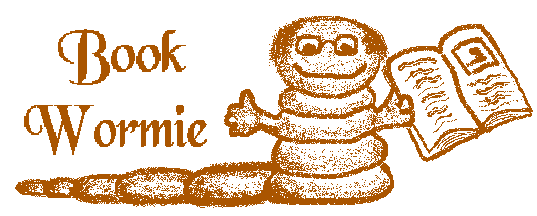
book reviews
&
books of interest
books by suellen wassem part 1
suellen, as many of you know, collaborated with the kindred spirits gals on one of their books, gatherings. she mainly focuses on quilts and hooked & penny rugs. she has taught a variety of needlework classes and all levels of quilting since 1978 as well as free-lanced designs to mccall's & needlework and crafts magazine and several others. her quilt designs lean toward a primitive, folk-art feel ,hand piecing, blanket-stitch, applique are prevalent throughout her designs. She has self-published seven books since 1995 ~
PIECES OF MY HEART DESIGNS
WINTER WHIMSIES
1995; 68 pgs Cost, $18.50.
A collection of 24 small,light-hearted projects to give and to keep. The themes are snowmen, mittens and stars...quilts, penny rug, stitcheries,sweatshirts and Christmas ornaments, plus 13" stuffed Snowlady.
ANGELS ALL AROUND
1995; 44 pgs.; Cost, $15.00.
A collection of angelic dolls and quilts. percentage of profit from this book contributed to the Leukemia Society of America
FOLK HEARTS
1996; 58 pgs.; Cost- $20.00.
Friendship has no Season...a collection of six quilts,Elizabeth Valentine doll, two penny rugs, sewing accessories, folk-art crafts and a heart and hand vest...goodies to honor, remember and welcome our friends and family.
for further information & ordering:
Suellen Wassem
wacongp@erinet.com
OTHER BOOKS OF INTEREST
How to Recreate Your Own Antique Bears and Dolls
by Georgina Ledlie
ASIN: 0864176341
this one is out of print, so ask for it at your library.

web sites of members & other sites of interest
a selection of lori baker's patterns can be seen at:
http://www.mobear.com/
also two of lori's hare patterns can be purchased thru:
Edinburgh Imports
www.edinburgh.com
1-800-334-6274
when pigs fly site...a shop that sells a variety of goodies
www.whenpigsfly.net
kindred spirits catalog page at Homespun Peddler.
BE CAREFUL
prose
Be careful of your thoughts
For your thoughts become your words.
Be careful of your words
For your words become your actions.
Be careful of your actions
For your actions become your habits.
Be careful of your habits
For your habits become your character.
Be careful of your character
For your character becomes your destiny.
Author Unknown
All rights reserved. No part of this newsletter may be reproduced without written permission from the publisher, except by a reviewer who may quote brief passages in a review with appropriate credits; nor may any part of this newsletter be reproduced, stored in a retrieval system, or transmitted in any form or by any means -- electronic, mechanical, photo- copying, recording, or other -- without written permission from the publisher.
 HOME PAGE
HOME PAGE